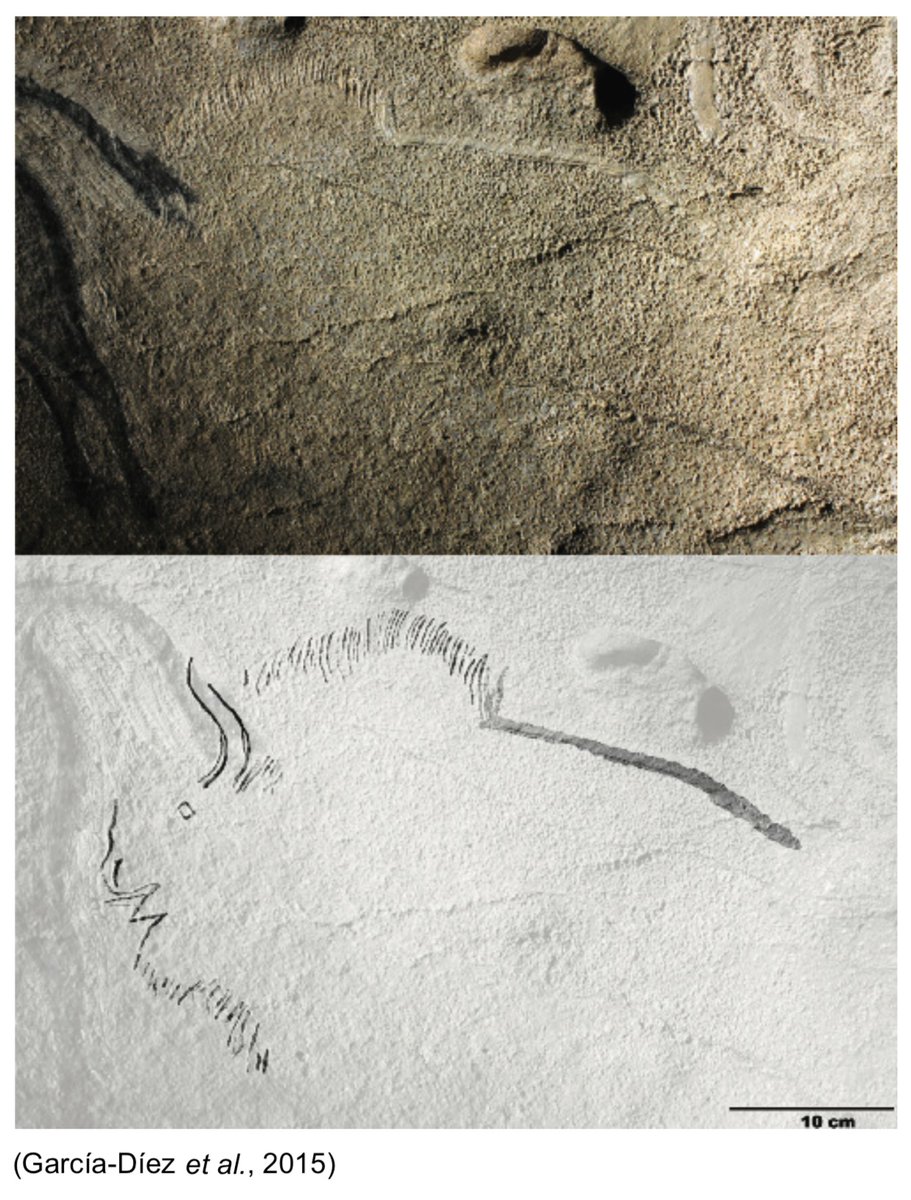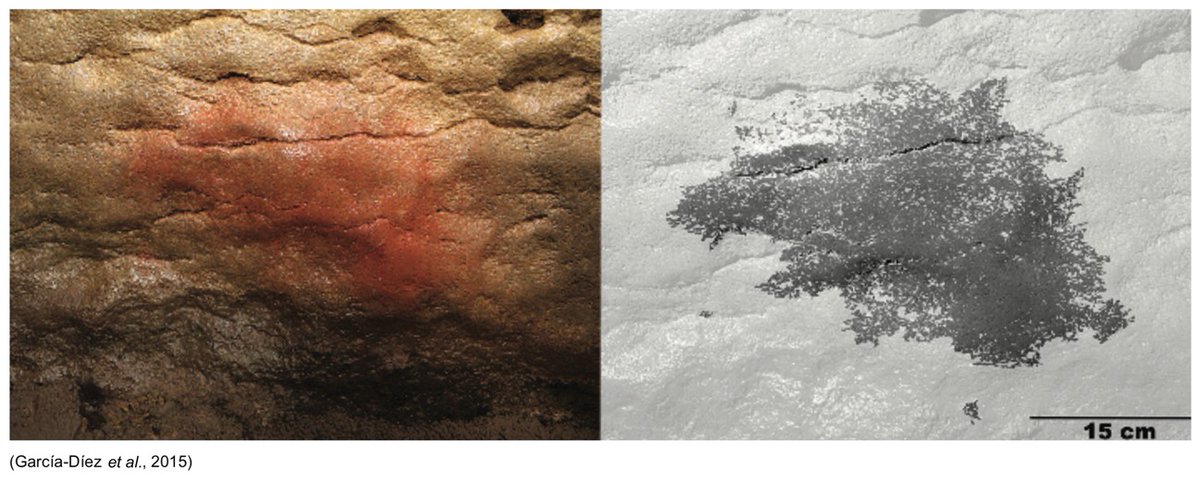🪔Hi! 📆Today is #EuropeanResearchersNight, but it is also #FridayPaleoart, so we are going to travel to...
Cave: #Covaciella
Place: Cabrales, Asturias (Spain)
Motif: Bison
Chronology: #Magdalenian
Cave: #Covaciella
Place: Cabrales, Asturias (Spain)
Motif: Bison
Chronology: #Magdalenian

⁉️Covaciella cave is located in the far east of Asturias, on Las Pandas mountain. It is located in a rugged environment, near the Casaño river. This site has a single level where Palaeolithic representations and archaeological deposits are distributed throughout it. 





📖Covaciella was discovered in 1994 by accident, when road works opened an entrance to its interior.
➡️ F. J. Fortea was the first author investigating it, followed by P. Saura and M. Múzquiz and, finally, the team of M. García-Díez.


➡️ F. J. Fortea was the first author investigating it, followed by P. Saura and M. Múzquiz and, finally, the team of M. García-Díez.



🔬Rock art, ochre and vegetal remains were discovered throughout the cave. In addition, three lithic pieces were recovered: two flint and quartzite flakes and a quartzite blade. 



❗️Palaeolithic art comprises 16 animals (nine bison, one horse, one deer, one reindeer, four doubtful animals) and several abstract graphic units such as lines and dots. 



📚The most important ensemble is in the Gallery of Paintings, where a large crack divides two opposing groups. Only three bison are painted and engraved, while the rest of the representations are executed in a single technique. 





📸In this panel, two possible morphotypes have been identified among the bison. One matches those found in caves in the Pyrenees, such as Niaux or Les Trois-Frères, and the other with bison from the Dordogne, such as Rouffignac or Font-de-Gaume. 







🤔💭Two of these bison were sampled in 1994 in order to date this artistic ensemble. The results of the C14 AMS dating indicate that they were made in the early Middle Magdalenian (~ 17500 cal BP).
M. García Bustos (@miguelgarci97)
📢End of thread!👋😉
M. García Bustos (@miguelgarci97)
📢End of thread!👋😉
• • •
Missing some Tweet in this thread? You can try to
force a refresh

































